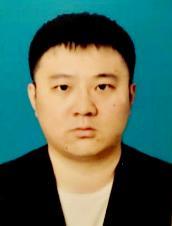
Xu Zhang
Professor, Principal Investigator, Doctoral Supervisor
Email: xu.zhang@@gdiist.cn
Personal Profile
Prof. Xu Zhang, Neuroscientist, Academician of Chinese Academy of Sciences, TWAS (The World Academy of Sciences for the advancement of science in developing countries) Fellow, and Member of Chinese Academy of Medical Sciences. He received his Ph.D. of Neuroscience from Karolinska Institute, Sweden in July, 1994. In 1994, he successively worked as a lecturer, associate professor and professor, and deputy director at the Neuroscience Institute of Fourth Military Medical University. In 1999, he became a professor and principal investigator in Lab of Sensory System at Institute of Neuroscience, Shanghai Institutes for Biological Sciences, Chinese Academy of Sciences. In 2021, he was appointed as a professor of Shanghai Institute for Advanced Study, Chinese Academy of Sciences, Director of Shanghai Brain-Intelligence Engineering Center, and President of Guangdong Institute of Intelligence Science and Technology, respectively. Now, he is the President, Professor and Principal Investigator of Guangdong Institute of Intelligence Science and Technology. He is also the President of the Chinese Neuroscience Society, the Vice Chief Supervisor of the Chinese Society of Cell Biology, and the Vice President of the Pain Branch of the Chinese Medical Association.
Laboratory of Somatosensory Neural Network
The group is mainly engaged in the research of somatosensory neural network. Somatosensory sensation includes pain, itch, temperature, etc. Primary sensory neuron in the dorsal root ganglion (DRG) is the first station of afferent somatosensory sensation. Its peripheral nerve projects onto the skin, muscle, etc. to feel pain, itch, temperature, and its central nerve projects into the spinal cord, then through different areas of the brain to cerebral cortex, so as to perform somatosensory sensation. Our previous studies have identified new regulators of pain transmission such as fibroblast growth factor 13 (FGF13) and endogenous Na+-K+ pump agonist follistatin-like 1 (FSTL1), which provide a molecular basis for clinical analgesia and drug development. In recent years, we have developed a single-cell sequencing technique for primary sensory neurons in the DRG, which has provided a new classification of primary sensory neurons, identified some marker molecules for specific cell types, and established the preliminary relationship between cell types and in vivo functions. Our current research focuses on exploring the somatosensory neural networks from various cell types of primary sensory neurons that are important for the somatosensory modulation of pain and itch, and identifying the interaction of somatosensory neural networks in the central nervous system.
Peripheral nerve injury and persistent inflammation cause pathologic pain. Based on the idea that changes of gene expression in spinal cord circuits may contribute to chronic pain, we developed cDNA microarray technology from rat DRG in the laboratory to systematically describe the gene expression profiles of DRG and spinal cord in chronic pain. The gene expression of ion channels, receptors and signal transducers in the DRG and spinal dorsal horn after peripheral nerve injury has been significantly changed, providing evidences for the unique gene expression profile of DRGs and spinal dorsal horn after peripheral nerve injury. In 2021, we used single-cell sequencing technology to further reveal the change of cell types in primary sensory neurons and corresponding functions caused by neuropathic pain induced by nerve injury. Our current research focuses on exploring the structural change of neural circuits during neuropathic pain, revealing their correlation with neuropathic pain, and finding their effects on cognition and other brain functions as well as related mechanisms of neural circuits.
Representative publications
1. Chen Y., Song Y-R., Wang H-D., Zhang Y-Y., Hu Y., Wang K-K., Lu Y-J., Zhang Z., Li S., Li A., Bao L., Xu F-Q., Li C-L., and Zhang X. (2022) Distinct neural networks derived from galanin-containing nociceptors and neurotensin-expressing pruriceptors. PNAS, 119: e2118501119.
2. Zhang S., Cai B., Li Z., Wang K-K., Bao L., Li C-L., and Zhang X. (2022) Fibroblastic SMOC2 suppresses mechanical nociception by inhibiting coupled activation of primary sensory neurons. J. Neurosci. 42: 4069-4086.
3. Wu D., Chen Y., Li Z., Xie H., Wang S-S., Lu Y-J., Bao L., Zhang X., and Li C-L. (2022) Zcchc12-containing nociceptors are required for noxious heat sensation. J. Neurosci. 42: 2690-2700.
4. Pan X-Y., Zhao J-R., Zhou Z-Y., Chen J-J., Yang Z-X., Wu Y-X., Bai M-Z., Jiao Y, Yang Y, Hu X-Y., Cheng T-L., Lu Q-Y., Wang B, Li C-L, Lu Y-J, Diao L, Zhong Y-Q, Pan J, Zhu J-M., Xiao H-S, Qiu Z-L, Li J, Wang Z-F., Hui J-Y., Bao L, Zhang X. (2021) 5’-UTR SNP of FGF13 causes translational defect and intellectual disability. eLife, 10: e63021.
5. Wang K-K., Wang S-S., Chen Y., Wu D., Hu X-Y., Lu Y-J., Wang L-P., Bao L., Li C-L., and Zhang X. (2021) Single-Cell Transcriptomic Analysis of Somatosensory Neurons Uncovers Temporal Development of Neuropathic Pain. Cell Res., doi: 10.1038/s41422-021-00479-9.
6. Dong F., Shi H-X., Yang L., Xue H-Q., Wei M-Y., Zhong Y-Q., Bao L., and Zhang X. (2020) FGF13 is required for histamine-induced itch sensation by interaction with NaV1.7. J. Neurosci. 40: 9589-9601.
7. Li J-Y., Shi H-X., Liu H., Dong F., Liu Z-P., Lu Y-J., Chen L-N., Bao L., and Zhang X. (2020) Nerve Injury-Induced Neuronal PAP-I Maintains Neuropathic Pain by Activating Spinal Microglia. J. Neurosci., 40: 297–310.
8. Yang L., Dong F., Yang Q., Yang P-F., Wu R., Wu Q-F., Wu D., Li C-L., Zhong Y-Q., Lu Y-J., Cheng X., Xu F-Q., Chen L., Bao L., and Zhang X. (2017) FGF13 selectively regulates heat nociception by interacting with Nav1.7. Neuron, 93: 806-821.
9. Li C-L., Li K-C., Wu D., Chen Y., Luo H., Zhao J-R., Wang S-S., Sun M-M., Lu Y-J., Zhong Y-Q., Hu X-Y., Hou R., Zhou B-B., Bao L., Xiao H-S., and Zhang X. (2016) Somatosensory neuron types identified by high-coverage single-cell RNA-sequencing and functional heterogeneity. Cell Res., 26: 83-102.
10. Liu H., Wu Q-F., Li J-Y., Liu X-J., Li K-C., Zhong Y-Q., Wu D., Wang Q., Lu Y-J., Bao L., and Zhang X. (2015) Fibroblast growth factor 7 is a nociceptive modulator secreted via large dense-core vesicles. J. Mol. Cell Biol., 7: 466-475.
11. Wang F., Cai B., Li K-C., Hu X., Lu Y., Wang Q., Bao L., and Zhang X. (2015) FXYD2, a γ subunit of Na+,K+-ATPase, maintains persistent mechanical allodynia induced by inflammation. Cell Res., 25: 318-334.
12. Zhang X., Bao L., Li S. (2015) Opioid receptor trafficking and interaction in nociceptors. Br. J. Pharmacol., 172: 364–374. (Review)
13. Wu Q-F., Yang L., Li S., Wang Q., Yuan X-B., Gao X., Bao L., and Zhang X. (2012) Fibroblast growth factor 13 is a microtubule-stabilizing protein regulating neuronal polarization and migration. Cell, 149: 1549-1564.
14. Liu X-J., Zhang F-X., Liu H., Li K-C., Lu Y-J., Wu Q-F., Li J-Y., Wang B., Wang Q., Lin L-B., Zhong Y-Q., Xiao H-S., Bao L., and Zhang X.(2012)Activin C expressed in nociceptive afferent neurons is required for suppressing inflammatory pain. Brain, 135: 391-403.
15. Li K-C., Wang F., Zhong Y-Q., Lu Y-J., Wang Q., Zhang F-X., Xiao H-S., Bao L., and Zhang X. (2011) Reduction of follistatin-like 1 in primary afferent neurons contributes to neuropathic pain hypersensitivity. Cell Res., 21: 697-699.
16. Li K-C., Zhang F-X., Li C-L., Wang F., Yu M-Y., Zhong Y-Q., Zhang K-H., Lu Y-J., Wang Q., Ma X-L., Yao J-R., Wang J-Y., Lin L-B., Han M., Zhang Y-Q., Kuner R., Xiao H-S., Bao L., Gao X., and Zhang X. (2011) Follistatin-like 1 suppresses sensory afferent transmission by activating Na+,K+-ATPase. Neuron, 69: 974-987.
17. Zhao B., Wang H-B., Lu Y-J., Hu J-W., Bao L., and Zhang X. (2011) Transport of receptors, receptor signaling complexes and ion channels via neuropeptide-secretory vesicles. Cell Res., 21: 741-753.
18. He S-Q., Zhang Z-N., Guan J-S., Liu H-R., Zhao B, Wang H-B., Li Q., Yang H., Luo J., Li Z-Y., Wang Q., Lu Y-J., Bao L., and Zhang X. (2011) Facilitation of μ-opioid receptor activity by preventing δ-opioid receptor-mediated codegradation. Neuron, 69: 120-131.
19. Zhang F-X., Liu X-J., Gong L-Q., Yao J-R., Li K-C., Li Z-Y., Lin L-B., Lu Y-J., Xiao H-S., Bao L., Zhang X-H., and Zhang X. (2010) Inhibition of inflammatory pain by activating B-Type natriuretic peptide signal pathway in nociceptive sensory neurons. J. Neurosci., 30: 10927-10938.
20. Wang H-B., Zhao B., Zhong Y-Q., Li K-C., Li Z-Y., Wang Q., Lu Y-J., Zhang Z-N., He S-Q., Zheng H-C., Wu S-X., Hökfelt T-G., Bao L., and Zhang X. (2010) Coexpression of δ- and μ-opioid receptors in nociceptive sensory neurons. Proc. Natl. Acad. Sci. USA, 107: 13117-13122.
21. Zhang X., Bao L., and Ma G-Q. (2010) Sorting of neuropeptides and neuropeptide receptors into secretory pathway. Prog. in Neurobiol., 90: 276-283. (Review)
22. Zhang X., Bao L., and Guan J-S. (2006) Role of delivery and trafficking of δ-opioid peptide receptors in opioid analgesia and tolerance. Trends in Pharmacol. Sci., 27: 324-329. (Review)
23. Zhang X. and Bao L. (2006) The development and modulation of nociceptive circuitry. Curr. Opin. Neurobiol., 16: 460-466 (Review)
24. Guan J-S., Xu Z-Z., Gao H., He S-Q., Ma G-Q., Sun T., Wang L-H., Zhang Z-N., Lena I., Kitchen I., Elde R., Zimmer A., He C., Pei G., Bao L. and Zhang X. (2005) Interaction with vesicle luminal protachykinin regulates surface expression of δ-opioid receptors and opioid analgesia. Cell, 122: 619-631.
25. Zhang X. and Xiao H-S. (2005) Gene array analysis to determine the components of neuropathic pain signaling. Curr. Opin. Mol. Ther., 7: 532-537. (Review)
26. Yang L., Zhang F-X., Huang F., Lu Y-J., Li G-D., Bao L., Xiao H-S., and Zhang X. (2004) Peripheral axotomy induces trans-synaptic modification of channels, receptors and signaling pathways in rat dorsal spinal cord. Eur. J. Neurosci., 19: 871-883.
27. Bao L., Jin S-X., Zhang C., Wang L-H., Xu Z-Z., Zhang F-X., Wang L-C., Ning F-S., Cai H-J., Guan J-S., Xiao H-S., Xu Z-Q., He C., Hökfelt T., Zhou Z., and Zhang X. (2003) Activation of delta-opioid receptors induces receptor insertion and neuropeptide secretion. Neuron, 37: 121–133.
28. Xiao H-S., Huang Q-H., Zhang F-X., Bao L., Lu Y-J., Guo C., Yang L., Huang W-J., Fu G., Xu S-H., Cheng X-P., Yan Q., Zhu Z-D., Zhang X., Chen Z., Han Z-G., and Zhang X. (2002) Identification of gene expression profile of dorsal root ganglion in the rat peripheral axotomy model of neuropathic pain. Proc. Natl. Acad. Sci. USA., 99: 8360-8365.
29. Bao L., Wang H-F., Cai H-J., Tong Y-G., Jin S-X., Lu Y-J., Grant G., Hökfelt T., and Zhang X. (2002) Peripheral axotomy induces only very limited sprouting of coarse myelinated afferents into inner lamina II of rat spinal cord. Eur. J. Neurosci., 16: 175-185.
30. Tong Y-G., Wang H-F., Ju G., Grant G., Hökfelt T., and Zhang X. (1999) Increased uptake and transport of cholera toxin B-subunit in dorsal root ganglion neurons after peripheral axotomy: possible implications on sensory sprouting. J. Comp. Neurol., 404: 143-158.















